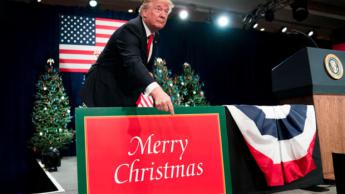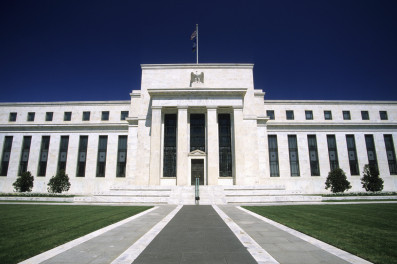 The beginning of 2018, like any beginning of year, raises a number of questions about what will be the course of the economy, whether for personal or professional reasons, we all want to know where to invest our money or if we should prepare for a new crisis.
The beginning of 2018, like any beginning of year, raises a number of questions about what will be the course of the economy, whether for personal or professional reasons, we all want to know where to invest our money or if we should prepare for a new crisis.
Making predictions in economics is always a complicated and, most of the time, extremely ungrateful task, given the endless amount of factors that may weight in the direction of economics, we almost get it wrong, even the best of us.
However, I see it as a great starting point to begin the work of this blog, to bring some pieces of what fellow economists and other market players see about the direction of the Brazilian and global economy in 2018, which has already begun in a troubled way, but full of expectations .In a series of five posts, starting with this one, I’ll write a little bit about what is expected for the Brazilian and global economy, in a year of never-so-heated elections, social security reform, economic recovery, and challenges such as the fiscal question, the unemployment rate and the balance between interest and inflation.
The opinions expressed here will be duly credited to their sources, when necessary, since these are the pillar of support for part of the author’s opinions about the economic scenario, since I believe these sources are the most reliable, with great accuracy in its forecasts and little (almost none) political/partisan bias.
World Stage
The world, as is well known today, is increasingly integrating, and this is no less true for the economy. Therefore, it is interesting to know what the main actors are and what roles they will play in the course of the year.
EUA, Trump e o Federal Reserve
 As expected, the first major character of this great opera is the President of the United States, Donald Trump. After a first year in office with some major obstacles, especially with regard to his popularity and relationship with Congress, the Republican government begins to gain traction, with a major tax reform underway, this can be said as the first major victory of Trump in the battleground of economic policy decisions.
As expected, the first major character of this great opera is the President of the United States, Donald Trump. After a first year in office with some major obstacles, especially with regard to his popularity and relationship with Congress, the Republican government begins to gain traction, with a major tax reform underway, this can be said as the first major victory of Trump in the battleground of economic policy decisions.
Reducing taxes, especially for companies, should reduce US public revenue by about $ 1 trillion, forcing a fiscal adjustment on US government accounts, at the risk of a significant increase in public debt. The results of this policy can prove both catastrophic and extremely beneficial.
 (Doug Mills / Copyright 2017 The New York Times)
(Doug Mills / Copyright 2017 The New York Times)
From the perspective of improving competitiveness, increasing the disposable income for investments and consumption and even the psychological effect of a tax reduction, which can move tax revenues from one point on the right side of the Laffer curve to a more optimal point, especially concerning corporative taxes, as economist Jeffrey Dorfman of the University of Georgia in his Jan. 8, 2017 article has pointed out, and which seems to have been heard by Trump’s economic staff, who made its biggest banner and propaganda the reduction from 35% to 21% in taxes for corporate profits.
However, as Dorfman points out, the Laffer curve for US income taxes has been largely unresponsive to fiscal incentives, as in the Bush and Reagan administrations, with revenues varying between 15% and 20% of GDP. Thus, there is a possibility that this tax cut does not have a positive impact on the collection of taxes, at the very least, or it has a strong negative impact, which could lead to the paralysis of public services, increase the need for indebtedness to finance basic activities and deteriorate the fiscal panorama of the US government.
The author’s opinion is that, for the United States, the reform should bring benefits, especially in the medium term, with a reduction of state’s intervention in the economy and a great investment boom that should take place within the horizon of 2 to 5 years, since many of these investments require the construction of physical assets to effectively bring returns.
In the short term it is possible that a fiscal imbalance will bring the need to attract capital to finance the deficit generated by the sharp cut in the collection. Thus, it is possible that the US tax reform will have strong impacts on the exchange rate, which should mean a rise of the US dollar against other currencies, especially from emerging markets, as a result of a significant migration of capital from these countries to US Treasuries .
It is also possible to have a strong impact on the stock exchanges world-wide, since with the greater attractiveness of the American market, many companies might find profitable to increase their investments in the country, causing investors to raise their bets on these companies. In addition, with the reduction of taxes, it is expected that the distribution of dividends will increase its values in the US and, as a result, the attractiveness of investments in companies traded on the United States stock exchanges.
Another major role in the global economy will be played by the United States central bank, the Federal Reserve. With a new chairman, Jerome Powell, soon to take command of the institution next February, expectations about the monetary policy directions of the world’s largest economy are getting higher.
 With a basic interest rate currently at 1.5%, a 2.20% inflation rate accumulated in 12 months as of December 2017 and an estimated 2.3% growth in 2018, according to OECD and IMF data, the expectation is that there will be at least three increases of 25 basis points in the interest rate during the year, but internal disagreements among members of the Federal Open Market Committee (FOMC) can reduce this number to 2 increases, or even raise it to four increases throughout the year, driving the US economy’s basic interest rate to 2.5%, the highest rate since March 2008.
With a basic interest rate currently at 1.5%, a 2.20% inflation rate accumulated in 12 months as of December 2017 and an estimated 2.3% growth in 2018, according to OECD and IMF data, the expectation is that there will be at least three increases of 25 basis points in the interest rate during the year, but internal disagreements among members of the Federal Open Market Committee (FOMC) can reduce this number to 2 increases, or even raise it to four increases throughout the year, driving the US economy’s basic interest rate to 2.5%, the highest rate since March 2008.
The Fed started reducing its balance sheet in October 2017, which was, at the time, adding up to US $ 4.2 trillion, aiming for US $ 1 trillion balance of assets for the next few years. Thus, the path to tightening monetary policy and increasing interest rates on US Treasuries becomes easier, which is a long time claim by the Republican Party, as Aaron Hankin from Investopedia portal explained in his septemper of 2017 article.
The overall impacts of a stronger-than-expected increase in the interest rate may intensify the possible effects of Trump’s tax reform, attracting more capital into the country and strengthening the Dollar against other currencies. Moreover, especially in the case of emerging countries, higher than expected interest rates in the US economy may shift investor interests to a less risk-exposed market, especially with the political scenarios of countries like Brazil and Mexico.
However, a low maintenance of the basic interest rate by the FED can lead to the reverse movement, improving the outlook, especially on the stock exchanges, and bringing significant amounts of capital into emerging markets, intensifying growth in countries such as Russia and Brazil, which have high nominal interest rates, offering good returns to investors.
As we can see, the weight of policy decisions in the United States has a crucial impact on the directions of the global economy, although much of its influence today is shared with the other major global player, China. We can no longer say that “wherever the United States goes, the world goes,” but it is certainly important that we observe closely the turning of the economic wheel of the world’s largest economy.
In the next part of the series of posts on the global economic scenario, we will talk a little bit about how the other two big global players, China and the European Union, will impact the world economy throughout 2018.
Share this:




